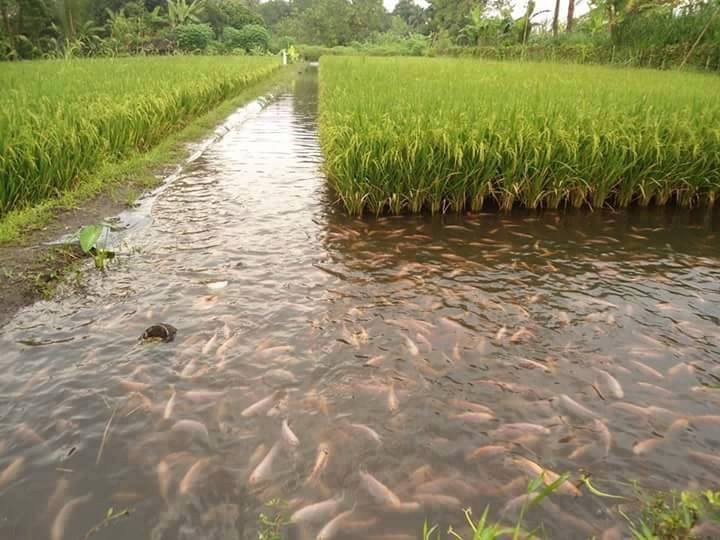Combined cultivation of rice and fish is recognized as paddy-cum- fish culture or rizipisci-culture.
This method is as old as rice cultivation itself. However, most people of developing countries are not well aware on this culture.

History
It is said that fish culture in rice fields was launch into South-East Asia from India about 1500
years ago, where presently it is the best developed, around 1900 this type of fish culture was
begun in Madagascar. Towards the end of 19th century fish culture in rice fields was practiced in
Italy. It has since spread to U.S.A. (Arkansas). Rice-cum- fish culture is well organized in other
paddy (rice) growing countries, especially in Taiwan and Japan.
Success stories
1. China has a very long history of aquaculture. The earliest aquaculture started some thousand
years ago in China. Chinese rice-fish culture farming has catalogued top most in the world
two decades due to fast and steady build out in the past three decades. Rice -fish farming has
been providing a very important source of animal protein for Chinese people, recently it is
guessed at 25 kg per capita of aquatic products, considering for about 70% of total available
products supply for Chinese people. As it is an important subsector of agriculture rice-fish
culture contribute approximately 2% of the national GDP.
2. In the Philippines rice-fish farms yielded a 27% higher net return with fish as compared to a
single crop of rice. It is possible to get a three-fold increase in profitability of rice farming by
culturing fish as well as rice.
3. In Bangladesh the returns from this aquaculture was over 50% greater than only rice. It is due
to the lower mean costs of rice cultivation and higher rice yields in addition to the fish yield
from integrated cultivation.
Merits of Rice-Fish Culture
It is a low risk technology.
Aquaculture saves water.
Rice-fish culture provides additional food and income by diversifying farm activities and
increasing yields of both the rice and fish crops
Fish feed on rice pests, thus reducing pest pressure
Balanced application of nitrogen between rice and fish resulted in 24% less inorganic
fertilizer application and low nitrogen loss into the environment
Fish provide NO 3…. N as nutrient to rice
Rice-fish farming is an excellent option to mitigate changing climate as it reduces methane
emission by almost 30% as compared to traditional rice farming
Rice-Fish culture and Pakistan
Pakistan is facing a problem of rapid increase in population growth and scarcity of water. So
Pakistan needs more food to feed people which can only be achieved with efficient use of inputs
especially water. Among leading rice producing countries, Pakistan stands at 4 th position.
However, in Pakistan, people are using a large amount of water in fish pond and this use not in a
sustainable manner. Nevertheless, people can get dual benefits by culturing fish is rice fields and
conserve water for future use. So, this aquaculture should be adopted by Pakistani community to
fulfill the need of food for the people.
The Way Forward
An increase in integrated farming of rice and fish is possible and would benefit farmers,
consumers and the environment worldwide. Several organizations, active in global policies for
food production and/or environmental sustainability, have become aware of this, and key
policymakers have formulated and disseminated relevant recommendations to governments,
institutions and stakeholders. This is encouraging and, given the benefits of rice-fish farming, it
is important to give priority to its continued promotion.
The authors are research scholar at Department of Agronomy, University of Agriculture,
Faisalabad-Pakistan